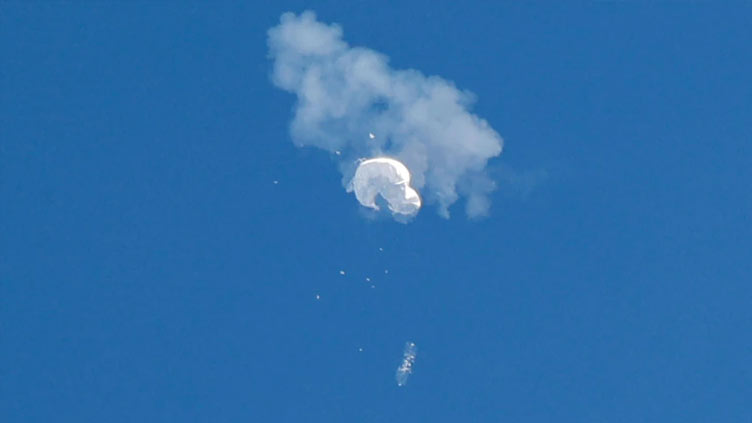How China's balloon sent the US on a hunt for flying objects

World
US military has been adjusting its radar to find flying objects.
WASHINGTON (Reuters) - After the U.S. government announced last week that a fleet of Chinese spy balloons had visited the United States undetected in recent years, the military had to admit the obvious: it had an "awareness gap."
So the U.S. military has been adjusting its radar to find flying objects - including balloons - that are smaller, slower and differently shaped than the enemy aircraft and missiles that have long preoccupied the Pentagon.
The result has been a spate of unprecedented shootdowns of mysterious objects - including on Sunday an octagonal structure downed by an F-16 over Lake Huron - raising still-unanswered questions about whether these phenomena are new or if they've been around all along.
U.S. officials acknowledge they are hard to find, even for the world's most sophisticated military.
"What makes them really hard to detect and track is their size and potentially the shape," said Gen. Glen VanHerck, head of U.S. North American Aerospace Defense Command (NORAD), describing them as "very, very small objects that produce a very, very low radar cross-section."
The suspected Chinese spy balloon that flew over the United States earlier this month led politicians to criticize the .S. military and U.S. President Joe Biden for not shooting it down when it first entered U.S. airspace.
The Pentagon said there had been four previous Chinese spy balloon flights over the United States in recent years.
RADAR ADJUSTMENTS
U.S. officials told Reuters that NORAD has been adjusting the filters and algorithms it uses to examine radar data, making them sensitive enough to detect these kinds of objects - ones whose ability to stay aloft, moving with the wind, is confounding U.S. officials.
Officials say a key change was to NORAD's filters to allow them to detect objects moving slowly and at different altitudes, without specifying which ones.
"We have been more closely scrutinizing our airspace at these altitudes, including enhancing our radar," said Melissa Dalton, an assistant secretary of defense.
Following identification, the question is how to determine which hits on the radar are merely noise and which are possible threats worth scrambling U.S. military pilots to chase after.
So far the result has been a series of visual confirmations and shootdowns - three over the past three days - and accompanying closures of American and Canadian airspace to avoid collisions between military and civilian aircraft.
"We're definitely looking harder now," said a U.S. military official, speaking on condition of anonymity.
On Friday, a U.S. F-22 fighter jet shot down an unidentified object about the size of a small car near Deadhorse, Alaska.
And on Saturday, another F-22 brought down an object described by Canada as similar in shape to but significantly smaller than the Chinese spy balloon hit by a U.S. missile on Feb. 4 off South Carolina's coast.
The latest object to get shot down on Sunday likely floated from Montana over to Lake Huron, where an F-16 brought it down with a Sidewinder missile, the same weapon used against the Chinese balloon and the unidentified objects. Each Sidewinder costs hundreds of thousands of dollars.
VanHerck said the military considered shooting guns at the objects, but this was deemed too difficult given the small targets. Using guns would also be more dangerous for the pilot, since debris can more easily hit an aircraft firing at close range than one launching a missile from a distance.
NO PRECENDENT
The U.S. military said the object shot down on Sunday appeared to have traveled near U.S. military sites and was a surveillance risk as well as a threat to civilian aviation.
"Our team will now work to recover the object in an effort to learn more," the Pentagon said.
Marc Polymeropoulos, a former C.I.A. officer, said on Twitter he could think of no precedent for the flurry of incidents.
"Nowhere on the 'Risk to US interests' bingo card is what has occurred over the last week," Polymeropoulos wrote, calling for transparency from the U.S. intelligence community.
U.S. Senator Michael Bennet, a member of the U.S. Senate Select Committee on Intelligence, said the U.S. public deserved better answers about the objects than they have now.
"We need to understand the nature of the threat to our national security," Bennet said.
Whether this is the start of regular shootdowns of unidentified objects over American skies is still unclear.
VanHerck said the military would come after any unknown object that posed a threat to North America.
"If it is a threat. I'll shoot it down," he said.


